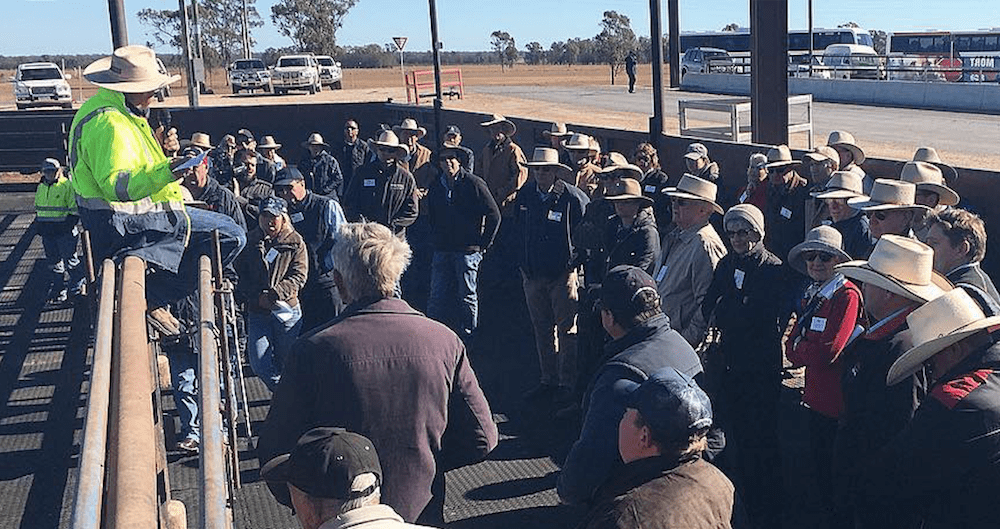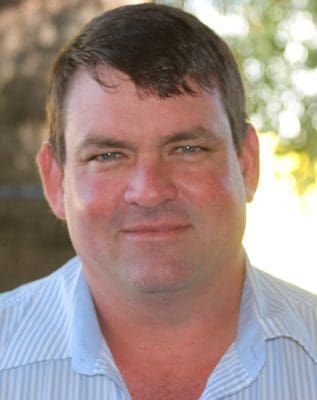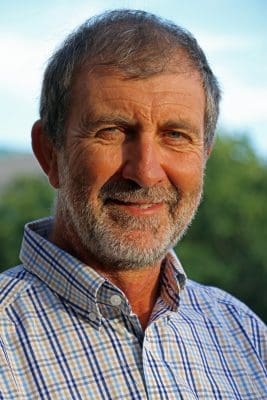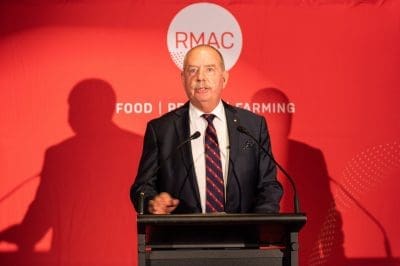IN THE six weeks since the red meat MoU review committee released its white paper and red meat sector reform proposal it seems fair to say that most of the public commentary since has been critical of the plan put forward.
It also seems fair to say most of that criticism has come from a small group of voices with a long history of being vocally opposed to existing industry organisations, and representing groups with no clearly demonstrated membership base of supporters.
This is not to say their views lack legitimacy – all levy payers have the right to air their views about how their levies are governed and invested – or even that their views are not necessarily widely shared.
But what has been missing from the public debate so far – with the notable exception of AgForce – is the question of where the larger representative groups stand on the proposal developed by the red meat MoU taskforce.
The cattle producers who are members of the various State Farm Organisations and in turn the Cattle Council of Australia may fall well short of comprising an actual majority of cattle levy payers these days, as their critics who do not reveal their own membership numbers* like to point out, but they still clearly represent the groups with the largest grassfed producer membership base, still comprising some thousands of paying cattle producer members.
A few weeks ago, one month after the white paper was released, Beef Central asked the various SFOs for their views on the reforms it recommended. Most were still considering the plan, but AgForce and its cattle chair Will Wilson did respond and offered a positive view on the restructure.
AgForce’s view was the reform proposed would be a major leap forward in terms of representation and advocacy for the red meat industry and should make industry more effective in influencing government policy and community attitudes, but it was imperative the new body be properly constituted to ensure the grass-fed beef industry’s relative size, long-term investment in the industry and predominance in paying levies be reflected in its representation on Red Meat Australia.
To this point, six weeks after the proposal was released, Cattle Council of Australia is yet to release a detailed response to the proposal, largely because most of its SFO members are still considering their response. Nor have any of the other peak industry councils involved yet provided a detailed response to the restructure proposal either, to our knowledge.
In a comment provided to Beef Central this week CCA president Tony Hegarty said industry meetings in Canberra last week did provide CCA members with a chance to progress the discussion about changes to the MoU and gauge the messages emerging from its members regarding the future of the MoU.
“That discussion coincides with more formal, comprehensive responses we’re receiving from the states which will allow Cattle Council to form its official response,” he said.
Mr Hegarty also confirmed to Beef Central that he met with Cattle Producers Australia representatives in Canberra last week to discuss industry reform.
CPA has been critical of the lack of progress in restructuring cattle producer representation and has rejected the representative framework suggested in the white paper, although it is understood Cattle Council’s meeting with CPA focused on restructure of grass-fed cattle representation.
“Cattle Council is the national peak representative council for beef cattle producers, so of course we are actively engaging with all producer stakeholders in relation to modernising our representative structures, both in terms of Cattle Council itself and the broader livestock and red meat industries,” Mr Hegarty said.
“Building consensus on industry reform requires leadership. We remain committed to our own restructure and have committed a great deal of time to it, but we need to look at the direct-elect model and other changes in the context of what the broader red meat industry advocacy structure will look like.
“Changes to the MoU and any restructure of the broader industry framework will impact Cattle Council and impact what is required of our own representative structure and governance.
“The timetable in front of us confirms that industry and government recognise the need to revisit the way our research and development corporations work.
“We need to consider advocacy structures, including funding sources and the use of levy monies, in line with RDC reforms, which will, in turn, better inform us in terms of what representative structures at a cattle producer level will be the most appropriate for producers.”
RMAC has undertaken to provide a report on White Paper progress, based on industry feedback, by November.
Many reader comments posted to Beef Central opposing the proposed reform share the view that the voice of producers and their ability to control the significant levy funding they collectively generate will be lost on a board where grassfed producers will only have one representative. Among stated concerns with the proposal is that, in aiming to create a strong single voice for red meat sector, the proposal fails to account for the natural commercial conflict that exist between different red meat sectors, such as the point of transaction between cattle sellers and buyers and between competing sectors such as processors and live exporters.
Years of industry debate indicate a strong desire for reform exists throughout the industry. This reform process provides an opportunity for change.
But it also relies on people offering not just criticism of existing proposals but genuine solutions as well, as RMAC chair Don Mackay said on Monday.
In its submission to the Green Paper/White Paper process Cattle Producers Australia did offer an proposed alternative which would see each industry sector be given enhanced control and direction over the expenditure and investment of the levies that its members pay; have its own levy funded R&D company and a representative advocacy body similar to the current two-company structure of the processor and live export sectors; MLA remain as an R&D service provider for the red meat industry as a whole and for each of its sectors; that RMAC be restructured as a needs-based organisation to deal with whole of red meat common commercial interest supply chain issues only; and that the Red Meat Reserve Fund be redirected and proportionally allocated to each industry sector peak industry council to invest and control, and each sector to have improved access to levy funding for policy development and advocacy (more details on the CPA release here https://cattleproducers.com.au/2019/08/09/cpa-condemns-white-paper-proposal/)
A number of people who have commented publicly believe industry reform should simply follow the seven recommendations made by the Senate Inquiry into grassfed levies and structural arrangements in 2014.
Views appear to be strongly divided as to whether the 2014 recommendations to create a single grassfed research, marketing and advocacy body with full control of grassfed levy funding is possible under existing Government rules that classify statutory levy funds as tax revenue. One thing that appears to be sorely needed so the debate can progress one way or another is some firm clarity on those points from those in a position to provide it – either the Department of Agriculture or the Minister for Agriculture or both.
While there has been lots of talk so far from a relatively small number of people,where the ‘silent majority’ of producers, and the other relevant levy payers including processors and live exporters, stand remains a critically important, but as yet unanswered, question.
- Beef Central has asked a number of groups that speak for cattle producers to provide details of their producer member numbers in recent times, but has not received a response.





The RMAC white paper must be vigorously debated by all participants of Australian livestock industries, as all financial and policy making in future will be set in concrete for them without appropriate producer input with the implementation of the current White paper recommendations.
There will be even less democracy and transparency with very little chance to change this new system once it is in place.
The RMAC white paper directly opposes all seven recommendations achieved in the 2014 senate hearing. These favourable directions for our beef industry have never been implemented and never will be if this paper achieves its aim of even less producer control. It is time for producers to put some skin in the game and demand these hard won senate recommendations which would give producers better control of our industry are put in place, not the direct opposite. Cattle Producers Australia have put together a future plan for a more democratic process and needs support.
We support Cattle Producers Australia (CPA) model as it addresses the requirements of a truly democratic representative cattle Peak Industry Council, as has been recommended by the ACCC study and numerous Senate Inquiries.
The proposed Red Meat Australia will allow other sectors to dictate how grass-fed cattle levies are spent.
An historical and critical beef industry crossroads issue is emerging and James Nason is to be congratulated for his excellent journalism in Beef Central coverage. The extraordinary vacuum of decision making by the Cattle Council of Australia on these RMAC White Paper Review Panel proposals highlights the flawed representative process for cattle producer levy-payers. A directly elected body representing all cattle producing levy-payers is so clearly needed.
Cannot understand Cattle Council’s stance, by what I recall they helped develop the CPA grassfed producer structure and than resigned from that process. It would be far better for the cattle industry if they rejoined the CPA and moved forward with that model which was strongly supported by the 2017 Senate Inquiry into the red meat industry to the extent that they recommended Government provide financial support for CPA’s establishment. They obviously recognised the need for a truly representative Peak Industry Council that has offers direct membership to all grassfed cattle levy payers.
Thank you James for providing the opportunity to clarify the position of the Australian Cattle Industry Council. We were formed from meetings in Casino, Boonah, Charters Towers, Tamworth and Wagga Wagga in the last half of 2017. ACIC has about 600 members who joined up at these meetings and we are proud to speak for them. At those meetings, we discussed Johne’s disease and the damage caused to movement of stock by the CCA-inspired J-BAS regulations. We also criticised industry leadership for their many failings.
In fact, my concern about the poor leadership provided to cattle producers was raised in 2013 by the stress and financial cost resulting from the AgForce and CCA recommendation to the then Queensland government to eradicate BJD by quarantining 258 properties. They were proven wrong to do this but it took action by the few to turn the ship around. Farms were lost and personal damage suffered, yet they have never apologised or paid compensation.
We keep referring to the work of Daniel Meade in listing the actions required to design a successful organisation to represent farmers. Jacqueline Curley recently commented on his efforts. Yes we do go back to the 2014 Senate Paper for answers as to how the industry restructure should be achieved. This was the most comprehensive inquiry meeting with grass roots members of our industry and seeking clarification on the issues raised. The Senate committee was chaired by a politician from the Labor Party and wrote a well argued and clear statement on what needed to be done.
Unfortunately, the promises made by the then Minister of Agriculture in a meeting in Brisbane in December 2014 were never realised, and those riding the gravy train continue on their merry way. The latest offering in the RMAC White Paper is a vain attempt to grab for control of the levies and strengthen their citadel. It must not be allowed and all cattle producers must rise up to express their rejection of the paper. Certainly ACIC members do.
Finally (in response to Brad Bellinger’s comment), let me attest to the critical importance of Beef Central to allow debate on issues such as these. When I presented the Howard Yelland Award to you and Jon, we recognised the great contribution you both made to our industry over your careers. Beef Central will continue to be the voice for our industry. Again, you are both to be congratulated for taking the uncertain steps in forming this platform.
Australian Cattle Industry Council
As stated in the original article, Beef Central has been seeking statistics from beef reform lobby groups over membership levels, to better gauge ‘representation.’ ACIC has obliged in this comment from John Gunthorpe. We’ve been chasing similar information from ABA and others for five years, without a response. We would note, however, that voluntary attendance at one meeting, somewhere in the distant past, hardly constitutes ‘membership’ in any realistic sense. Editor
Sorry editor you misunderstand. All members are continuing members of ACIC and are opposed to the RMAC trying to reinvent themselves with this White Paper they are promoting. Our members consider the paper was written well before the committee review was started.
Editor- correct, by just attending a meeting in the distant past organised by a local consultant for his clients with Mr Gunthorpe as one of numerous speakers doesn’t mean you are a member of ACIC. The majority of attendees at the Wagga Wagga meeting mention by Mr Gunthorpe didnt even know why Mr Gunthorpe was speaking. Well done James, keep pushing to get actual numbers of signed up members to these so called representative groups.
No surprise in your comment Marc. For the information of readers I was invited to speak at Wagga Wagga meeting by the organizer. All attending seemed to appreciate the presentation and they supplied name, address, phone and PIC number to register their membership of ACIC. They also paid a membership fee. This same procedure happened at all meetings. Membership continues as does our push for a democratic industry restructure following the recommendations of the 2014 Senate Report. Time has come for you and the other old guard to stand aside and allow levy payers to determine their own future.
The Cattle Producers Australia’s proposal will satisfy the needs of grassfed cattle producers providing a democratic model allowing all levy payers to have a say in their industry and also have a say in the expenditure of their levies. This will give producers ownership of grassfed cattle production systems and the ability to improve profitability and build strong leadership that is so noticeably lacking at present.
So, what % of levy payers vote to endorse the stage managed Moa agm motions? I hear it is a very small minority. By your tone then Mla motions must be questioned as unrepresentative? The constructive solution is that each levy payer gets to vote for board members directly from an open field of nominees, at the very least.
Red meat reform process need solutions not just criticism, well said, who could disagree. Could be possible the biggest majority of Australian cattle producers have no idea of the White Paper or what it contains, and more importantly how it will affect them. One solution could see RMAC travelling the countryside and organising forums where the White Paper could be explained in detail, and producers questions could be answered. When MLA wanted to get the increase in the levy they visited every state to put their case, after voting came in and the Minister agreed to the increase they had to repeat the process in 2009 and have another vote, to keep the increase. Any vote could be a problem, despite the recommendations of the Senate in 2014 we still cannot identify everybody paying a five dollar cattle transaction levy. Simple solution anybody paying a cattle transaction levy in the last 12 months and could produce a receipt, would be given a vote in a one-man one-vote uncomplicated and give genuine democracy.
Any RMAC roadshow must also allow for speakers who do not like the suggested structure.
Otherwise producers will hear all the positive spin and none of the possible pitfalls.
At this stage most producers are unaware of the existence of the White Paper much less its contents.
Beef central attempts to denigrate those that criticize RMAC.
Independence in rural journalism is severely lacking.
Here are some numbers for you James. The Australian Beef Association in conjunction with Bindaree Beef have held the largest rural forums in recent times 1400 at Roma and 1100 at Armidale .Beef producers at these meetings were almost unanimous in their opposition to the policies of MLA and Cattle Council and the structure itself.
The 2014 Senate inquiry was the most far reaching inquiry into the needs and wishes of cattle producers. They have been ignored using a cop out that the recommendations were illegal(absolute rubbish).
Producers need to instruct their agents and processors in direct sales to stop taking the levy out of our cheques before we get paid .Agents are not registered tax collectors so why are they allowed to deduct levies from sale proceeds and even worse not required to identify the tax payers to the levies collection unit.
Thanks for your comment, Brad. For what it is worth, it is not all uncommon for Beef Central to receive vigorous criticism from both sides of the debate, on the same article, when covering industry restructure matters.
While the ‘numbers’ you offer are not quite the numbers we were requesting earlier, they deserve a response. Your tally for the meeting orchestrated by Bindaree in Armidale all those years ago is heavily inflated, compared with independent reports published at the time. Also note please, MLA does not set policies. We can in no way condone your suggestion of excluding levies on cattle sales. Editor
We now see domestic consumer groups questioning the integrity and the sensibilities of our NLIS EAR TAG SYSTEM. This system was forced upon us by the beef hierarchy, in defiance of heavy criticism (saying that it would fail), in collusion with the 2 major processors of that time.
Such is the disregard, of the grass roots, which is the status quo of our Australian beef industry.